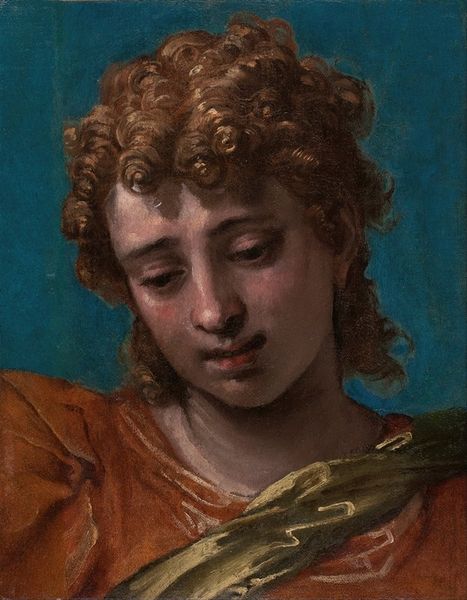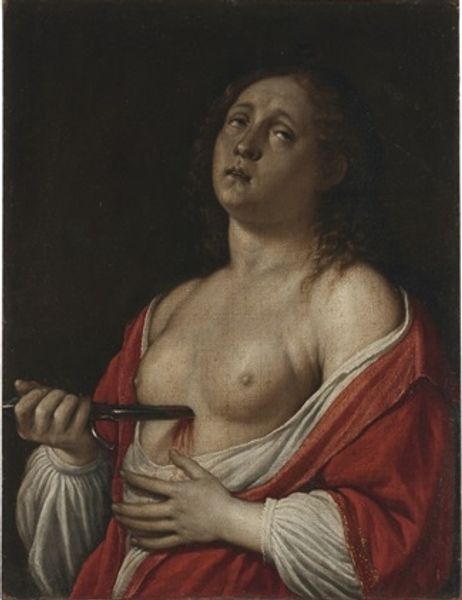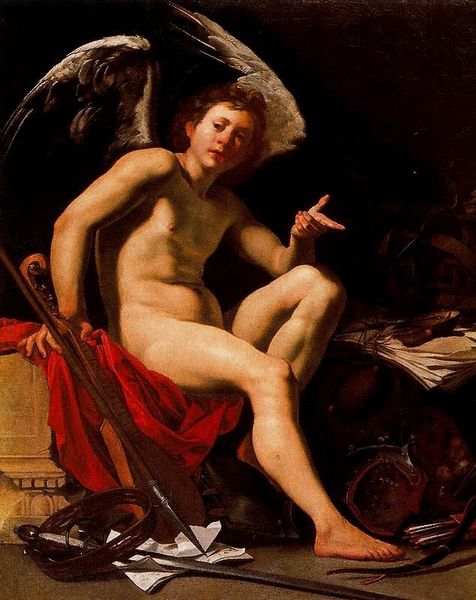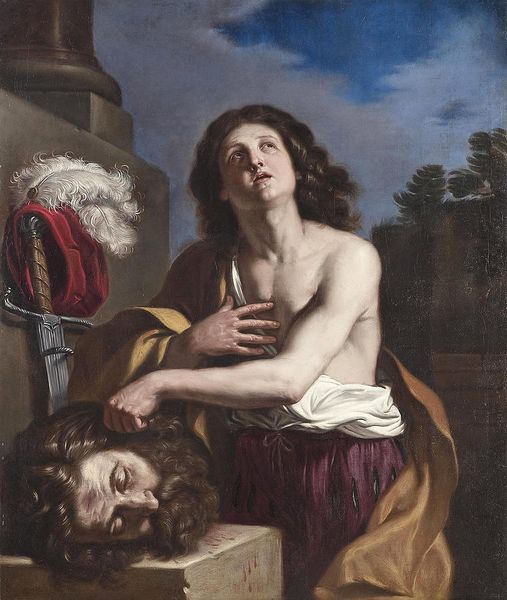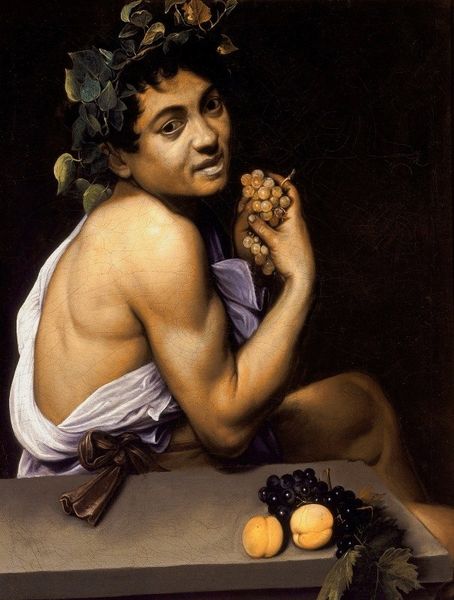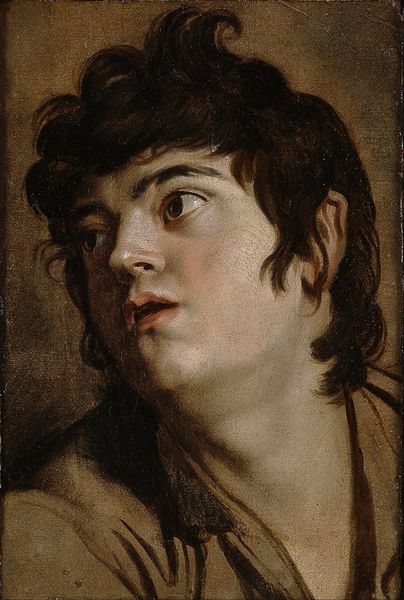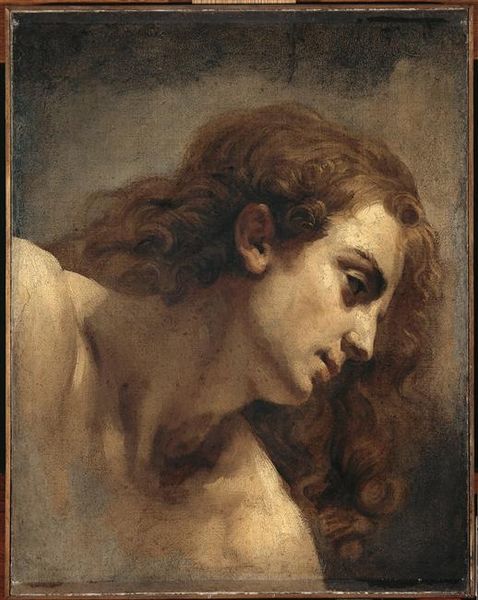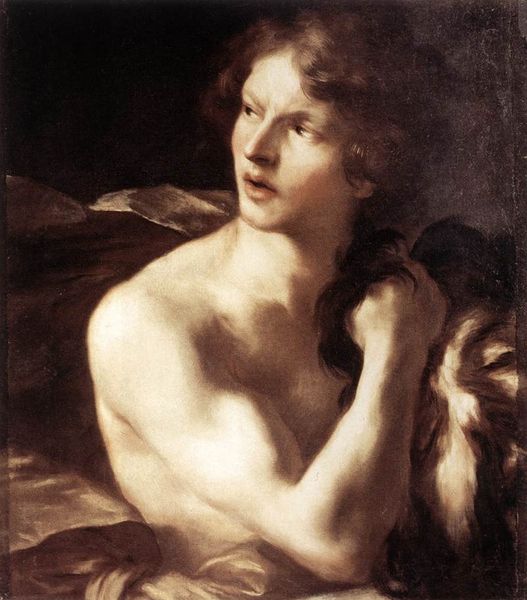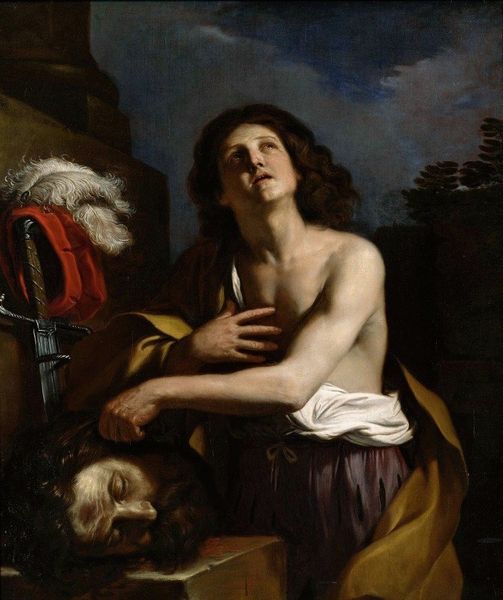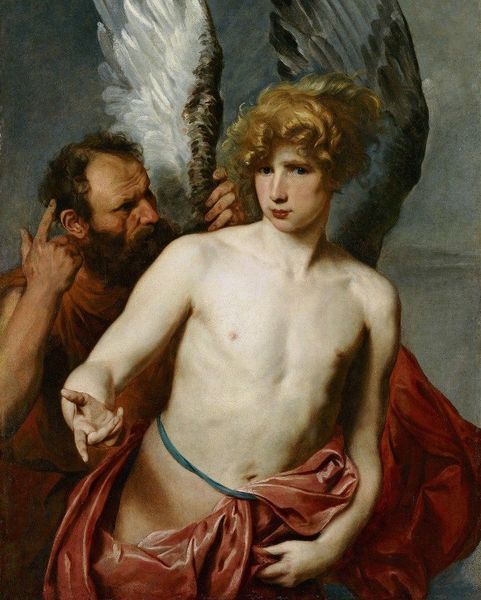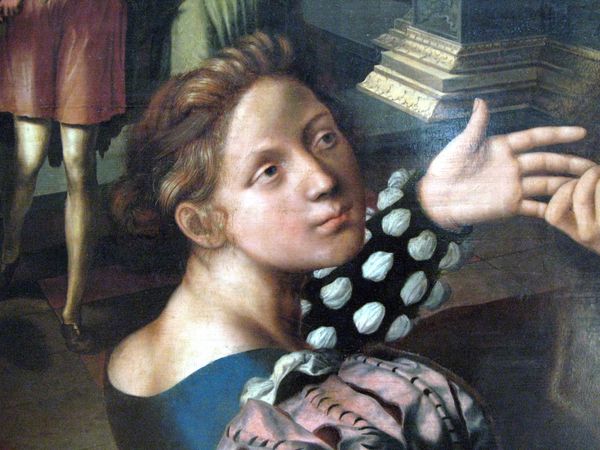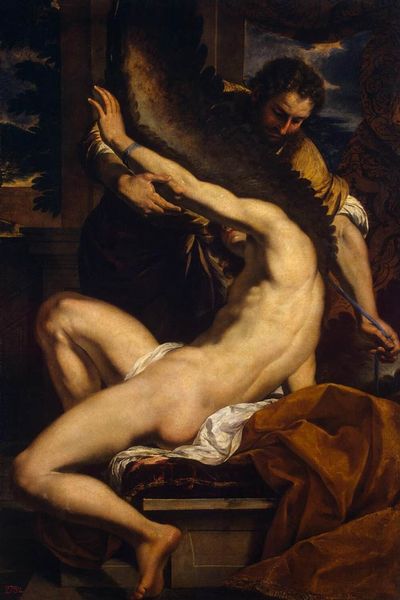
Copyright: Public Domain: Artvee
Editor: Here we have Caravaggio's "Boy Bitten by a Lizard," created around 1594 using oil paint. The visceral reaction of the boy really strikes me – it feels incredibly raw and immediate. What can you tell me about it? Curator: It's a remarkable piece, isn’t it? The visceral nature you describe reflects Caravaggio’s challenge to the idealized aesthetics dominating late 16th-century Italian art. This painting isn't just about depicting a boy; it’s about capturing a fleeting, painful, perhaps even slightly comical moment. Consider the theatrical lighting - what we call tenebrism - that exaggerates the boy's startled expression. Editor: Yes, that lighting definitely enhances the drama! What was the broader social context for this type of dramatic realism? Curator: The late Renaissance and early Baroque periods were a time of significant social and religious upheaval. The Catholic Church was actively seeking ways to re-engage the public. Art became a powerful tool for conveying emotional and relatable experiences. Caravaggio’s work offered an alternative to the aloofness of earlier Renaissance art, directly involving the viewer through relatable human emotion. Do you see any indications of status here? Editor: Not really, he's adorned with a flower but overall it doesn’t read as aristocratic at all. Curator: Precisely. Caravaggio’s realism often involved portraying everyday people, making his art more accessible to the general populace. Instead of depicting mythological figures, he captures street life in a refined manner. The politics of imagery at the time strongly influenced artistic expression, don’t you agree? Editor: Absolutely. It’s fascinating how art became such an instrument within these power dynamics. I learned so much, thank you. Curator: Indeed. Looking at it through this lens gives us a richer appreciation of Caravaggio’s place in art history, I, too, have learnt much from this conversation.
Comments
No comments
Be the first to comment and join the conversation on the ultimate creative platform.
